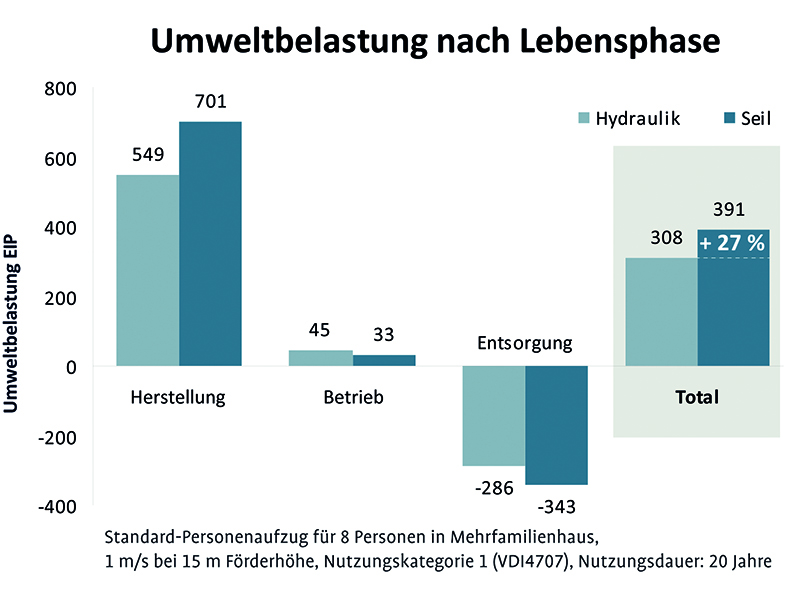Energy efficiency – good or only well-meant?
Do you think you are contributing to environmental protection by buying a new car? We improve the CO₂ balance sheet only after 300,000 kilometres.
And then only if the new car actually consumes at least a litre less in reality than the old one on the street instead of just in the brochure. The situation with lifts is similar.
Currently, the energy requirement in the company is usually taken as the sole criterion for energy efficiency. The reality is in fact far more complex - the ecological optimisation potential is far from being exhausted by this narrow point of view.
Entire life cycle must be considered
In order to be able to evaluate the ecological sustainability of a product, its entire life cycle must be considered and allowance made for ‘grey energy’. ‘Grey energy’ is the total quantity of non-renewable primary energy used for all up- and downstream processes.
This represents a large, frequently overlooked portion of our energy consumption. By contrast, the energy costs in operation are relatively unimportant when one considers the whole picture. However, in order to reduce overall energy consumption significantly, what counts is recognising and exploiting the enormous potential of the efficient use of raw materials and the long service life of products.
Modernisation instead of throwaway culture
Companies that face up to their ecological responsibility have to recognise that striving after energy efficiency only makes up a small part of a higher resource efficiency strategy. In the case of multi-family buildings and blocks of rented flats, a service life of 60 – 85 years is assumed, in the case of a lift just 15 – 20 years. Therefore, to evaluate resource efficiency or sustainability, the entire life cycle of a building and not just the life cycle of the lift should be considered.
But in order to be energy efficient in operation too, it is important to find the right drive in the planning phase for the particular application. Bucher Hydraulics provides the support required for this in all phases of planning and development.
The advice ranges from the first important step – thorough analysis of the lift data – to presenting various possible solutions and deploying the corresponding tools to visualise the energy requirement. The important parameters for energy efficiency in the operational phase are energy consumption during the trip and energy consumption in standby mode. Many years of experience and the specialist expertise of the lift partner are the key here to individual modernisation packages.
More sustainable with hydraulics
If you make sustainability in planning the lift to the decisive criterion – i.e. not just energy efficiency during operation - a hydraulic solution is unavoidable. A decisive contribution to reducing the ecological footprint is achieved through easily realisable modernisations applied over the entire life cycle of the building. Figure 2 clearly shows that the hydraulic lift is much less of a burden on the environment than a cable lift when the entire life cycle is considered.
In summary, when it comes to a standard passenger lift of a multi-family building under the conditions presented in the diagram, it is clear that manufacturing a lift has a much greater effect on the ecological footprint than the operating time.
Tailor-made modernisations
Complete renewal is far less sustainable than modernisation due to the great material intensity and high consumption of grey energy. Complete replacement of a hydraulic lift by a cable lift is doubtless well-meant with regard to the operating phase, but in ecological terms cannot be justified in any form.
A decisive contribution to reducing the ecological footprint is achieved through easily realisable modernisations of hydraulic lifts, which can occur over the entire life cycle of the building. This is where Bucher Hydraulics points the way in terms of sustainability and provides tailor-made modernisations of hydraulic drives, which are tailor-made for particular customer requirements.
www.bucherhydraulics.com


























Write a comment